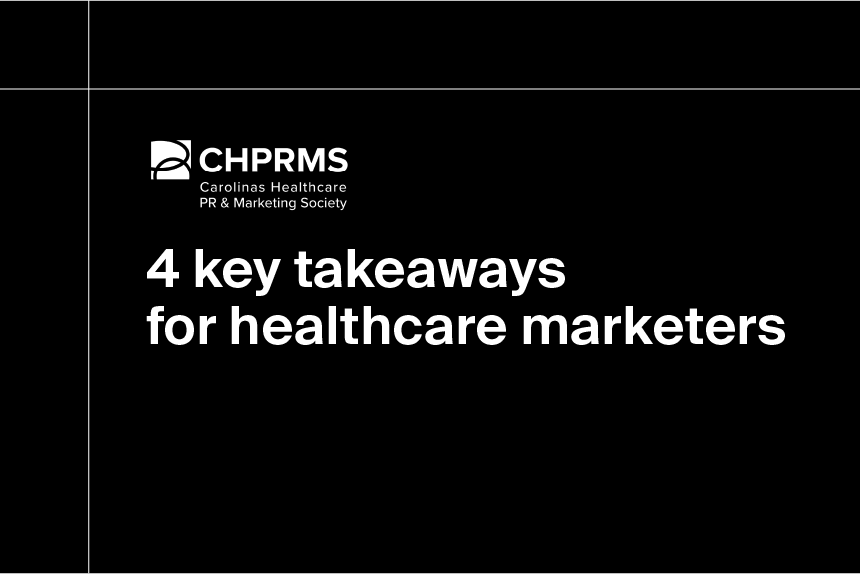When it comes to marketing and selling to healthcare providers, long-term care facilities are unique in their approach to patient care. Unlike hospitals and clinics, long-term care facilities focus on chronic condition management over extended periods, not acute care.
That fundamental difference shifts the way you should approach marketing and sales strategy, especially if you're a provider of health IT, medical devices, or data-driven solutions.
In this article, we break down what long-term care facilities are, how to segment your marketing, what decision-makers prioritize, the data that drives smarter go-to-market strategies, and key trends shaping the future of long-term care.
What is a long-term care center?
A long-term care (LTC) center is a post-acute healthcare facility that treats patients for extended periods, often months or years, typically for chronic illnesses, rehabilitation, or palliative needs.
Examples of long-term care facilities include:
- Assisted living facilities (ALFs)
- Skilled nursing facilities (SNFs)
- Hospices
- Home health agencies (HHAs)
Each type serves a different patient population and presents unique operational and regulatory challenges—critical distinctions for marketers.
Recognize the differences between LTC centers
Each type of long-term care (LTC) facility comes with unique patient populations, clinical demands, operational workflows, and regulatory obligations—all of which should shape your marketing strategy. LTC facilities differ in five key areas:
Care delivery models
Skilled nursing facilities (SNFs), or nursing homes, provide high-level medical care and support with activities of daily living (ADLs) for residents with complex health needs. Marketing to SNFs should emphasize clinical-grade medical devices, advanced patient monitoring tools, and robust care management software that supports compliance and efficiency.
Assisted living facilities (ALFs) serve residents who need help with daily tasks but do not require 24/7 medical supervision. Assisted living marketing strategies may focus more on solutions that enhance resident safety, comfort, and quality of life, such as fall prevention technology, recreational programs, or communication platforms for families.
Home health agencies (HHAs) provide skilled nursing and therapy services in patients’ homes, catering to those who need medical support but prefer to remain in their own environment. Senior care marketing for home health might highlight remote monitoring, telehealth capabilities, and care coordination tools that support aging in place.
Hospice care focuses on providing compassionate end-of-life support, pain management, and emotional care for patients with terminal illnesses. Effective hospice marketing involves messaging tailored to comfort, dignity, and family support, emphasizing specialized staff training and palliative care expertise.
For more specialized LTC settings, such as memory care units, messaging might be even more targeted.
Budgets and funding
Understanding a facility’s financial structure can help you tailor pricing strategies and payment options.
ALFs are typically funded through private pay, meaning residents or their families cover the cost out-of-pocket. This can offer greater purchasing flexibility, but it also increases pressure on vendors to clearly demonstrate value, ROI, and resident impact, as decisions are often made with cost-consciousness in mind.
SNFs are usually funded through a mix of Medicaid, Medicare, and private pay. Because these facilities rely heavily on government reimbursement, especially Medicaid for long-term stays, budgets can be tighter and procurement processes more complex, often requiring regulatory alignment, cost-justification, and formal RFPs.
Staffing and training needs
Long-term care facilities that manage complex or chronic conditions often require highly specialized staff, which makes training a critical component of your solution’s success. This includes onboarding for clinical software, medical equipment, safety protocols, and care procedures.
Staff training requirements could influence who you reach out to—and what you say. For instance, if training is heavily regulated, the director of nursing or clinical leadership may be the primary target. If the focus is on staff development or reducing turnover, a major challenge in LTC, the human resources team may play a more central role in the purchasing process.
Regulatory and compliance requirements
Regulatory requirements vary significantly across long-term care facilities based on the level of medical care they provide.
Because nursing homes provide medical care, they are subject to strict federal and state regulations, enforced by agencies like the Centers for Medicare & Medicaid Services (CMS), to ensure patient safety, quality of care, and compliance with Conditions of Participation (CoPs).
In contrast, assisted living facilities are regulated primarily at the state level, with requirements that vary widely by state. ALFs generally face fewer federal oversight mandates than nursing homes due to their focus on non-skilled care.
When marketing to long-term care providers, emphasizing how your products or services align with or exceed these regulatory standards can be a powerful differentiator, showing your commitment to supporting safer, more compliant, or higher-quality care.
Decision-making
Organizational structure plays a key role in defining your target personas and determining the right stakeholders to engage within long-term care facilities.
In assisted living facilities, decision-making is often more decentralized, especially in smaller or independently owned centers. Purchasing decisions may involve facility administrators, executive directors, or operations managers, and in some cases, family members or residents themselves may influence decisions—particularly when it comes to quality-of-life products and services.
In contrast, skilled nursing facilities—especially those that are part of larger health systems or corporate chains—tend to have more centralized and formal procurement processes. Key decision-makers often include administrators, directors of nursing, procurement officers, and clinical leadership. Regulatory considerations and reimbursement policies may also play a bigger role in shaping decisions in SNFs than in ALFs.
How to use healthcare data for smarter marketing and better results
At Definitive Healthcare, we emphasize the power of data-driven marketing to drive growth. Leveraging the right healthcare data helps you refine market segmentation, sharpen messaging, and unlock new revenue opportunities, especially in complex B2B environments like long-term care.
Here are key types of healthcare data you can use to improve your marketing strategy:
Facility-level data
Gain insight into the operational, financial, and quality performance of individual LTC centers:
- Size and capacity: Number of beds, occupancy rates, and staffing levels.
- Ownership type: Public, private, nonprofit, or chain affiliation.
- Financial performance: Revenue, expenses, and payor mix.
- Quality metrics: Star ratings, readmission rates, healthcare-acquired infections, and patient satisfaction scores.
- Regulatory compliance: History of citations or fines.
Patient-level data
Understand the characteristics and care needs of the populations these facilities serve:
- Demographics: Age, gender, primary diagnosis, and comorbidities.
- Length of stay: Average and median length of stay.
- Discharge destination: Whether patients return home, are transferred to another facility, or are discharged to hospice.
- Payor information: Medicare, Medicaid, private insurance, or other payor sources.
Market-level data
Get a high-level view of trends, demand, and competitive pressures in your target regions:
- Population demographics: Aging population trends, disease prevalence, and healthcare utilization rates.
- Competitive landscape: Number of long-term care facilities in your region, their size, and services offered.
- Payer landscape: Dominant payors in the region and their reimbursement rates.
- Regulatory environment: State-specific regulations and licensing requirements.
By combining these data points, you can create highly targeted campaigns, identify ideal-fit prospects, and align your solution with the needs and constraints of your buyers.
Want deeper insight into the LTC market? Our LongTermCareView product offers deeper insights into the LTC market, including data at the market, facility, and patient levels. Or discover how to perform a referral pattern analysis for long-term care facilities.
What is the outlook for the long-term care market?
The long-term care market is poised for significant growth in the coming years. In the U.S., it's projected to grow to $730 billion by 2030, reflecting a 7.7% CAGR.
Key drivers fueling growth in the LTC market include:
An aging population
In 2024, roughly 18% of Americans were age 65 or older, marking a continuing upward trend in the senior population. By 2050, that share is projected to rise even further to around 23% of the population. This demographic shift significantly expands demand for long-term care services.
High prevalence of chronic conditions and specialized needs
Chronic illnesses, such as Alzheimer’s, heart disease, and diabetes, are driving LTC demand. For example, in 2025, 1 in 9 people aged 65 and older (about 11%) had Alzheimer’s disease.
Technological innovation and new care delivery models
Innovations such as telehealth, remote patient monitoring, and digital care platforms are reshaping care. These tools:
- Enable older adults to age at home longer
- Support earlier detection of unmanaged conditions
- Introduce new service models that may increase LTC utilization when more intensive interventions become necessary
This digital shift opens fresh avenues for healthcare IT and device companies to deliver scalable solutions that improve outcomes and meet evolving market demands.
Learn more
For more tips and best practices, read our guide on how to market to long-term care centers, or watch our on-demand webinar for more strategies to enhance your efforts to sell to LTCs.
Ready to put the data to work? Get a free trial of Definitive Healthcare and explore powerful insights into the long-term care market.




